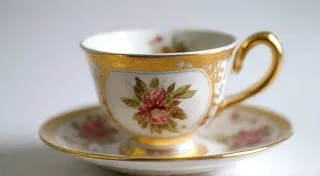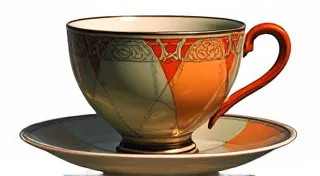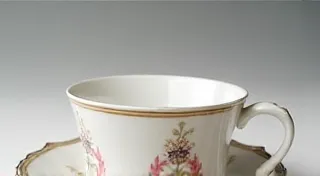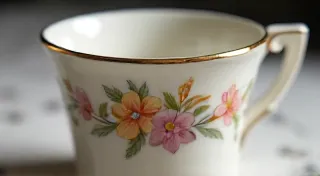The Significance of Gilding on Antique Tea Cups
Antique tea cups are treasured objects, holding not just a history of afternoon rituals, but also a story of artistry and craftsmanship. While the design and overall pattern significantly contribute to their appeal, the gilding – that shimmering gold (or sometimes silver) detailing – often holds a key to understanding a tea cup's age, manufacturer, and overall value. Let's delve into the significance of gilding on antique tea cups.
What is Gilding?
Gilding, in the context of porcelain, is the application of a thin layer of precious metal, typically gold, silver, or platinum, onto the surface of the ceramic glaze. It's a complex process requiring skilled artisans, and the quality and style of the gilding can be a defining characteristic of a piece.
The History of Gilding in Tea Cup Production
The practice of gilding porcelain dates back centuries, originating in Asia. European porcelain manufacturers, particularly in the 18th and 19th centuries, adopted and refined the technique. Early gilding techniques were laborious and time-consuming, making gilded pieces inherently more valuable.
Types of Gilding & Their Age Indicators
Different gilding techniques and appearances offer clues to a tea cup’s age:
- Raised Gilding (Early 18th Century): This is a thicker, more prominent application of gold. It often stands out from the glaze surface and can be slightly rough to the touch. You'll frequently find it on early Worcester and Chelsea pieces.
- Burnished Gilding (Mid-18th Century): A smoother and more refined gilding technique. It appears brighter and more even than raised gilding, thanks to a polishing process. Look for this on pieces from the Bow and Derby factories.
- Engine-Turned Gilding (Late 18th – Early 19th Century): This technique uses a specialized tool to create a repeating pattern within the gold. The pattern isn't etched *into* the gold, but rather appears as a textured surface within the gilding. It suggests a more mechanized and efficient production process.
- Painted Gilding (19th Century onwards): As production methods became more advanced, gilding was sometimes applied using a brush instead of being hand-laid. While still beautiful, painted gilding tends to be less vibrant and may lack the depth of earlier methods.
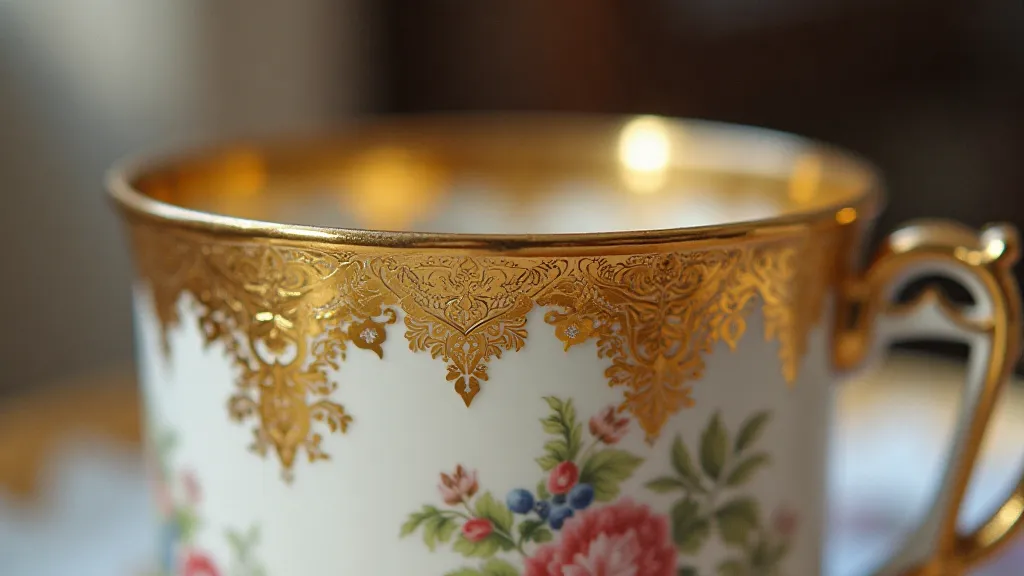
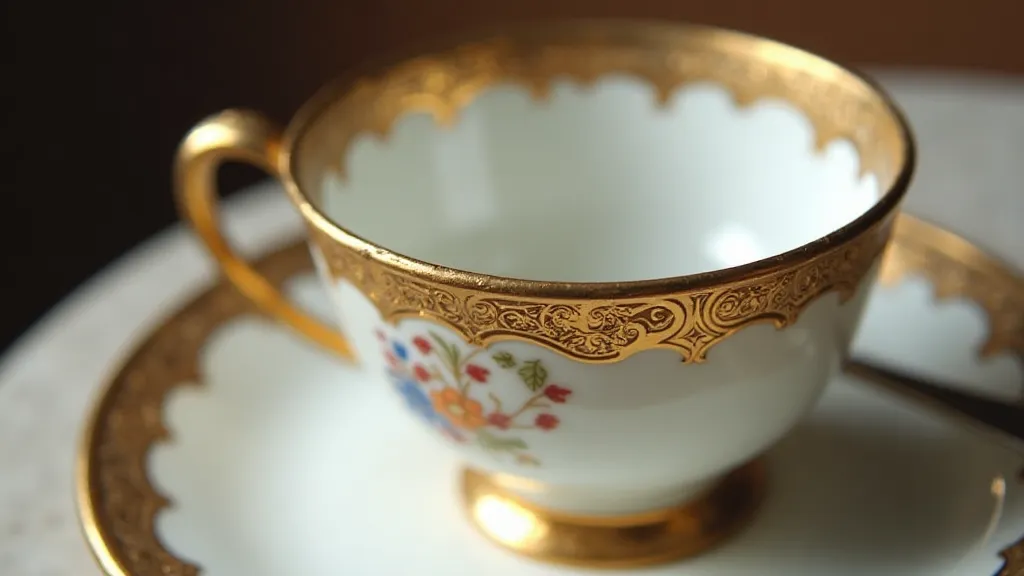
Gilding and Value
The presence and quality of gilding are significant factors in determining the value of antique tea cups:
- Rarity: Gilded pieces were generally more expensive to produce, so they were less common than plain china. This relative rarity increases their desirability.
- Craftsmanship: Impeccably applied gilding, free from blemishes and imperfections, commands a higher price.
- Style: The style of gilding can be indicative of a specific manufacturer and period, making it a valuable marker for collectors.
- Condition: Gilding is delicate and prone to wear. A well-preserved gilded rim is a major plus.
Identifying Gilding Quality
Examining the gilding requires careful observation. Use magnification to check for imperfections, wear, and the overall appearance. A healthy amount of gilt should be visible and appear vibrant. Remember that wear and tear are common on antique pieces, but excessive wear can diminish the value.
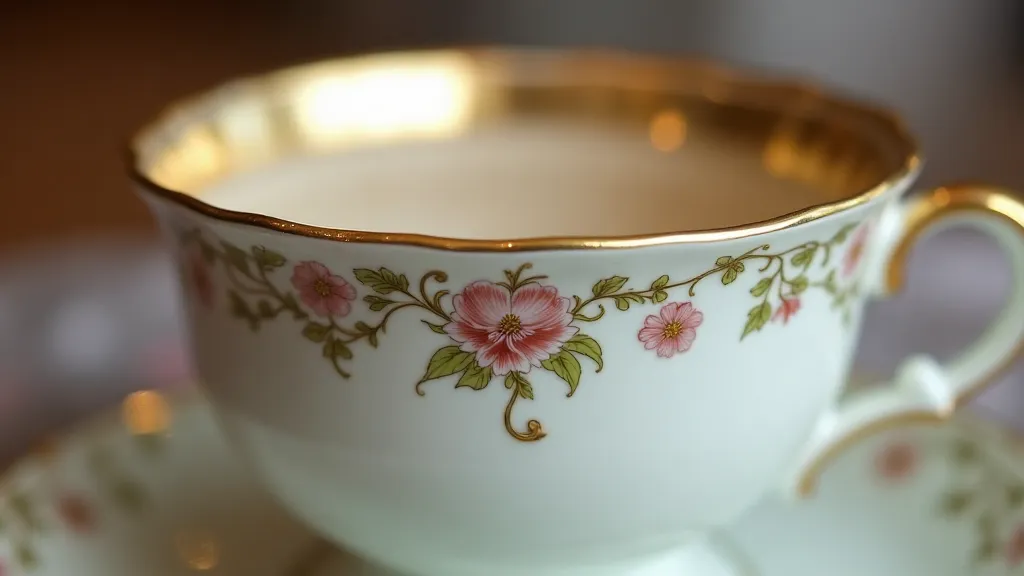
Conclusion
The gilding on antique tea cups is more than just a decorative element; it’s a window into the history of porcelain production, a testament to the skills of the artisans, and a crucial factor in determining a piece's value. By understanding the different types of gilding and learning how to identify their characteristics, you can deepen your appreciation for these beautiful and collectible objects.
